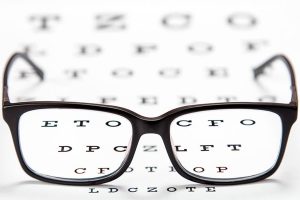Refractive Disorders
 Refractive disorders (also called “refractive errors”) occur when your eye fails to correctly bend the light that enters it. In order to see clearly, light must focus on a single, precise point on your retina – the sensitive tissue at the back of your eye. Your retina converts light images into electrical signals that are sent to your brain through the optic nerve. If the light is not properly focused on the retina, the images you see will be blurry or distorted.
Refractive disorders (also called “refractive errors”) occur when your eye fails to correctly bend the light that enters it. In order to see clearly, light must focus on a single, precise point on your retina – the sensitive tissue at the back of your eye. Your retina converts light images into electrical signals that are sent to your brain through the optic nerve. If the light is not properly focused on the retina, the images you see will be blurry or distorted.
Refractive errors are not harmful to your eye health, but they can have a significant negative impact on your daily life.
Common Refractive Disorders
The four most common refractive disorders are:
- Myopia (nearsightedness) – Close objects are clear, but objects at a distance are blurry and out of focus. This occurs because your cornea is too steep, or your eye is too long, which causes the incoming light to focus in front of your retina, instead of directly on it.
- Hyperopia (farsightedness) – Close objects are out of focus, but objects at a distance are often clear. This occurs because your cornea is too flat, or your eye is too short, which causes the incoming light to converge at a point behind your retina, instead of directly on it.
- Astigmatism – Blurry, distorted vision at both near and far distances. This is caused by an irregularly shaped cornea that scatters light as it enters your eye, making it focus at multiple points instead of a single location.
- Presbyopia – A refractive error that is caused by the normal aging process. The natural lens inside your eye becomes harder and inflexible, making it difficult to focus on close objects. Presbyopia is the reason why people over the age of 40 typically need reading glasses or bifocals.
Correcting Refractive Disorders
Glasses and contact lenses are the most common method of correcting refractive errors. However, some patients with a more active lifestyle may want a permanent treatment that will eliminate – or at least reduce – their dependence on eyewear. LASIK eye surgery and PRK can correct many different cases of myopia, hyperopia, and astigmatism by reshaping the surface of your cornea, allowing light to bend correctly for the first time.
Presbyopia cannot be corrected with LASIK since it is a problem with your lens, not your cornea. Instead, certain premium lens implants can correct presbyopia, eliminating the need for reading glasses or bifocals. Dr. Brooks will discuss all of your treatment options with you in detail during your appointment.
If you have further questions about refractive errors, please contact Brooks Eye Associates today or call (972) 736-9347 to schedule an appointment. We serve patients in North Texas, including Plano, Frisco, McKinney, and Dallas.




